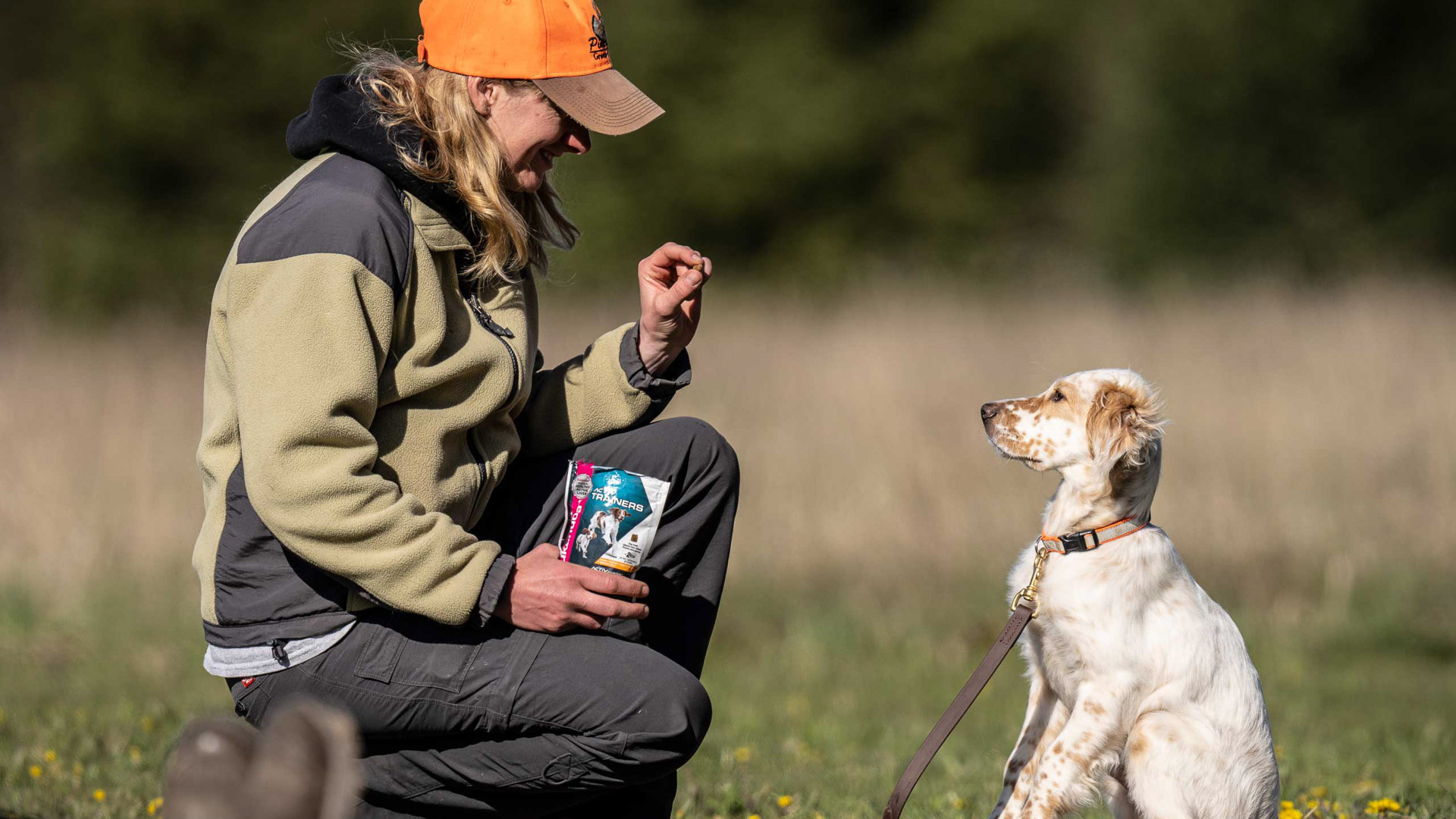
Dogs destined for a life of outdoor adventures with their owners need to be bold and confident. One way to develop extraordinary adventure companions is by using positive training methods when they are puppies. Positive training tells puppies what you want them to do and then rewards them for successfully completing the task. Once a puppy understands the kind of behavior that gets him a reward he’ll want to do more of it.
Positive Training 101
Robert Milner of Tennessee’s Duckhill Kennels is credited with introducing positive training methods to the United States. “Positive training is a rewards-based system,” he said. “When a puppy does what is asked of him, he earns a reward. Puppies learn very quickly to do more of what is asked so they can earn more rewards.” But the method is also easy on the trainer. “Dogs do what pays and dogs quit doing what doesn’t pay. If a trainer asks a dog to ‘come’ and he comes then the dog gets a treat. If the trainer asks a dog to ‘come’ and he doesn’t come, then the dog doesn’t get a treat. The trainer controls the pay, and puppies quickly choose a path that gives them a reward. It works faster than other methods, and it’s fun. I’ve worked with urban search and rescue dog handlers, and they’ve reported that a novice can train a dog three times faster with positive training than other methods.”
Here are some tips to get started using positive training with your puppy.
Pick your Reward
In positive training sessions, a reward is used to show a puppy he has done the right thing. Puppies respond well to a variety of different rewards, but food is most commonly used. If you’re using food, try a treat specifically designed for training. These treats are usually low in calories to promote a healthy weight, and some contain additional nutrients like DHA to support healthy brain function.
Praise is also used in positive training and can be a kind word delivered in a happy, upbeat tone, a pat on the back or a rub on the belly. Read your dog to understand which reward he responds to best.
Keep training sessions short
When puppies are between 8 and 20 weeks of age their minds are like a sponge. That’s the best time to establish a solid, positive training foundation. Since puppies readily absorb new information, daily training is important. That said, their attention spans are short. For the most productive results, use a 5-10 minute training session two or three times a day. After each session let your puppy play and have some fun. After that, he’ll want to take a nap. When he’s refreshed try another short session followed by more play and another nap.

Use simple and consistent commands
Puppies respond best to simplicity and consistency. Use short, easy to understand commands and stick with them. For recall, say ‘come,’ and say it every time. Shifting from ‘come’ to ‘come here’ to ‘come over here’ confuses puppies. Confused puppies don’t understand what you want them to do. Repetition makes the master, so focus on one command during each training session. Keep commands simple, consistent, and upbeat, and reward your puppy each time he gets it right. Once he has mastered the task at hand, move on to the next command.
Timing is Important.
With positive training, the timing of a treat or praise is really important. The reward should come immediately upon successful completion of the task. If time passes before the reward is given, then the puppy doesn’t know what he’s being rewarded for. If using treats, keep them easily accessible and deliver one precisely each time your puppy properly completes the task. Since it can take puppies numerous attempts to master a task, be mindful of your energy and tone throughout each training session. Stay consistent, be patient and upbeat, and your puppy will look forward to learning new skills.





